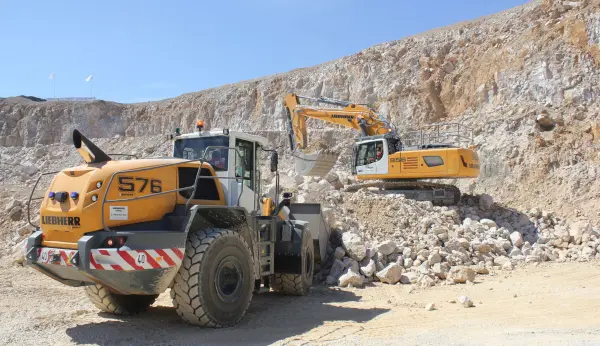B1 - Rolled Asphalt
Rolled asphalt is a material specified almost exclusively in the UK and Ireland, where it is often made using sand as the fine aggregate fraction.
Bituminous mixtures have four components — coarse aggregate, fine aggregate, filler and bitumen. The difference between the many bituminous mixtures produced in the UK is based on the proportions of these four components.
The proportions of the four constituents vary depending on the application. Generally, rolled asphalt mixtures have between 30% and 60% coarse aggregate, most of it from only one size fraction. The fine aggregate content varies between 20% and 50%.
The remainder of the mixture is made up of bitumen and limestone filler in approximately equal proportions. The mixtures with the lowest proportion of coarse aggregate have the highest proportion of bitumen and filler.
Rolled asphalts are often referred to as gap-graded because some of the intermediate aggregate size fractions contain few particles. The bitumen, filler and fine aggregate (sand) form a ‘mastic’ that is resistant to the ingress of moisture. The coarse aggregate particles are surrounded by mastic — like ‘the chocolate chips in a muffin’.
In the Standard, 32mm size is the largest base mixture and 14mm size is the largest surface course mixture. There are also 10mm and 2mm size (sand carpet) mixtures for use on footways.
Full details are given in:
- BS Guidance: PD6691 Asphalt - Guidance on the use of BS EN 13108 Bituminous Mixtures, Material specifications
- Standard: BS EN 13108-4, Bituminous mixtures – material specifications. Part 4: Hot rolled asphalt
BS EN 13108-4 replaced:
- BS 594-1 Hot rolled asphalt for roads and other paved areas. Part 1: Specification for constituent materials and asphalt mixtures
The BS EN 13108 Standards present a menu of specification requirements from which individual specifications can be selected. Not all of the requirements in the Standard are appropriate to UK applications. The guidance in PD 6691 is important.


